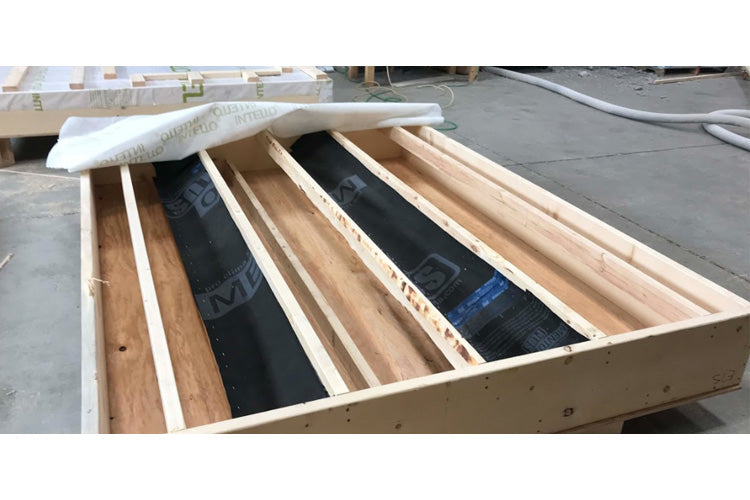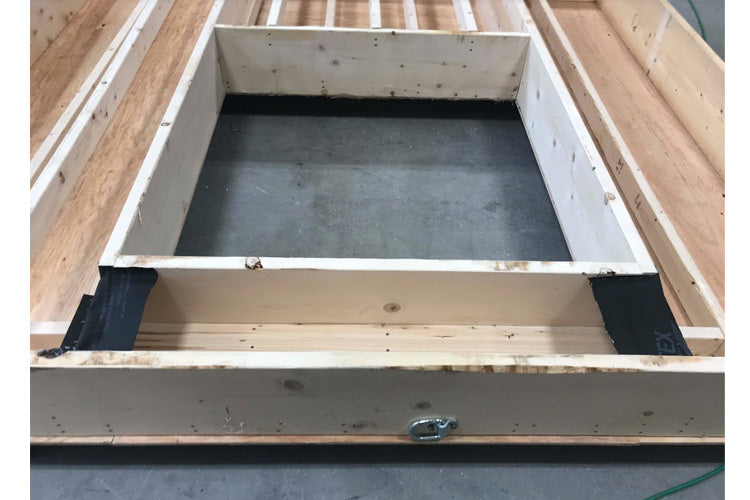With contributions by Matthew Brennan, National Sales Manager at Thermocell; Jesse Matthews, Quality Control at RDH (formerly carpenter at The Fourth Pig Green and Natural Construction).
At 475, a large number of projects we work on use dense-pack cellulose as the insulation of choice. Cellulose insulation consists of recycled newspapers, shredded and treated with small amounts of borates to repel insects and enhance the fire-retardant properties of the material. Alternatively, Gutex THERMOFIBER is made from wood fibers and treated with alum sulfates and is self supporting at 2lbs/CF.
Blown-in fibrous insulation is used in many applications – other insulation reps will claim it “settles” – but this is only true when installed below recommended densities. With the right installer, experience, and equipment to pack the insulation at appropriate densities, these issues are resolved, leaving us with a reliable foam-free solution for new construction and retrofits.
Deep walls and roof cavities made behind INTELLO Plus can be 8-12” or even 24” in depth. These super-insulated assemblies come with some unique challenges, but deliver outstanding results – without blowing hole a in the project's carbon budget by using spray foam.
Low carbon, recycled content, cost-effective, high performance
Installing dense-pack insulation behind INTELLO Plus / INTELLO X (from the interior) or SOLITEX MENTO PLUS / Gutex woodfiber insulation boards (from the exterior), gets you a very cost-effective high R-value solution. Blown-in fibrous insulation adapts to different wall thicknesses and can pack I-joist quickly and efficiently. Densely packing cellulose using a professional insulating machine to 3.5 to 4lbs per cubic ft avoids setting depending on installed depth (1.8 to 2.5 lbs/CF for Gutex THERMOFIBER). While cellulose is hygroscopic and can buffer some moisture, the use of an INTELLO intelligent airtight system optimizes performance of the insulation by preventing air and moisture infiltration from the warm, conditioned space – while allowing inward drying when needed. This is especially important in highly insulated assemblies or with vapor closed exteriors.
1.) Leave enough room between framing members to fit blow nozzle.
If the framing members are too close, an entire cavity could be inaccessible to the dense pack installer. This should be avoided at all cost, either by pre-insulating these spaces at windows and corners – or by different framing layout in those areas.

Photo courtesy of Jesse Matthews / The Fourth Pig
2.) Compartmentalize double stud walls or Larson trusses with pieces of mesh or membrane BEFORE the final INTELLO/MENTO Plus is installed.
This allows each to be filled consistently and efficiently by the installer. Since a known volume is filled, the installer should count bags per bay, to assure required densities are reached, without the need for a core test to verify density
Partitioned cavities with MENTO Plus - Photos courtesy of Jesse Matthews / The Fourth Pig
3.) Install a strip of an airtight membrane before floor trusses are laid, before interior partition walls are framed, and between interior partition walls and the ceiling
This strip of membrane - sometimes affectionately called a “floppy bit” - helps ensure the continuity of the interior air and vapor control layer, resulting in a clean, consistent connection all the way around the building. In durable high performing airtight enclosures, we should be able to draw a red line (denoting the primary airtight layer) around the entirety of the enclosure without lifting our pen off the page.
4.) Always use an experienced dense pack installer
Make sure the installer uses the professional blowing equipment, and is familiar with densepacking a wall specifically. Because it requires different equipment and effort than installing loose fill in an attic, technique and quality control measures (including counting bags and taking a core samples to ensure the right density is achieved.
5.) Be mindful of others creating holes in important airtight layers
Place signs around the project - as numerous as “no smoking” signs - to get everyone on board with protecting your high performance cellulose install, and reporting any penetrations to the supervisor.

Photo courtesy of Jesse Matthews / The Fourth Pig - signs available as part of 475's sample pack.
We hope that your next dense pack install is a success and helps you deliver low carbon, high performance comfort, health, and durability to your next project.







 Floppy bit sequencing photos courtesy of Ed May / bldgtyp llc
Floppy bit sequencing photos courtesy of Ed May / bldgtyp llc
 Partitioned cavities with MENTO Plus - Photos courtesy of Jesse Matthews / The Fourth Pig
Partitioned cavities with MENTO Plus - Photos courtesy of Jesse Matthews / The Fourth Pig
